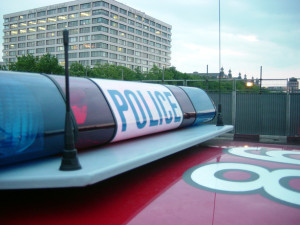 In Commonwealth v. Wentworth, the Supreme Judicial Court ruled (1) that under the Massachusetts armed career criminal act (ACCA), G.L. c.269, §10G, “the ‘modified categorical approach’ … is the appropriate analytical framework … when determining whether a predicate offense” of assault and battery “involved ‘force’”; and (2) that “the defendant’s [prior] conviction of assault and battery was a conviction of a violent crime in these circumstances and could serve as a predicate offense under the ACCA.”
In Commonwealth v. Wentworth, the Supreme Judicial Court ruled (1) that under the Massachusetts armed career criminal act (ACCA), G.L. c.269, §10G, “the ‘modified categorical approach’ … is the appropriate analytical framework … when determining whether a predicate offense” of assault and battery “involved ‘force’”; and (2) that “the defendant’s [prior] conviction of assault and battery was a conviction of a violent crime in these circumstances and could serve as a predicate offense under the ACCA.”
The background was as follows. On the basis of an incident during which the police found a loaded handgun in the defendant’s vehicle, he “pleaded guilty to carrying a loaded firearm unlawfully as an armed career criminal with one predicate offense.” “At the plea colloquy, the judge and the Commonwealth made it apparent that the … [defendant’s] prior ACCA conviction [was] a domestic assault and battery from 2005.” Regarding that offense, the prosecutor stated, “‘[W]e have to show violence; that he … struck his girlfriend at the time in the face and shoved her down on the bed.’ To follow up, the judge asked the defendant, … [‘]Are the facts as stated by the prosecutor correct?’ The defendant answered, ‘Yes’” and proceeded to plead guilty to the charges.” Subsequently, he filed a motion to vacate the conviction and for a new trial, which was denied. On appeal, the defendant argued that his predicate offense, the 2005 assault and battery, was not “a violent crime under the ACCA.”
In its decision affirming the denial of the defendant’s motion to vacate the ACCA conviction and for a new trial, the SJC noted that under the “force” clause of the ACCA, the only “clause [that] is in play in the present case,” “a ‘violent crime’ is ‘any crime punishable by imprisonment for a term exceeding one year … that … has as an element the use, attempted use or threatened use of physical force or a deadly weapon against the person of another[.] [Commonwealth v. Beal, 474 Mass. 341,] 349 [2016].” Here, the defendant “claim[ed] that the ‘force clause’ … demands a strictly categorical, elements-focused approach, which” “generally requires a court to look only to … the statutory definition of the prior offense” and “prohibits inquiry into the factual means underlying the prior conviction.” Continue reading →
 Massachusetts Criminal Lawyer Blog
Massachusetts Criminal Lawyer Blog









